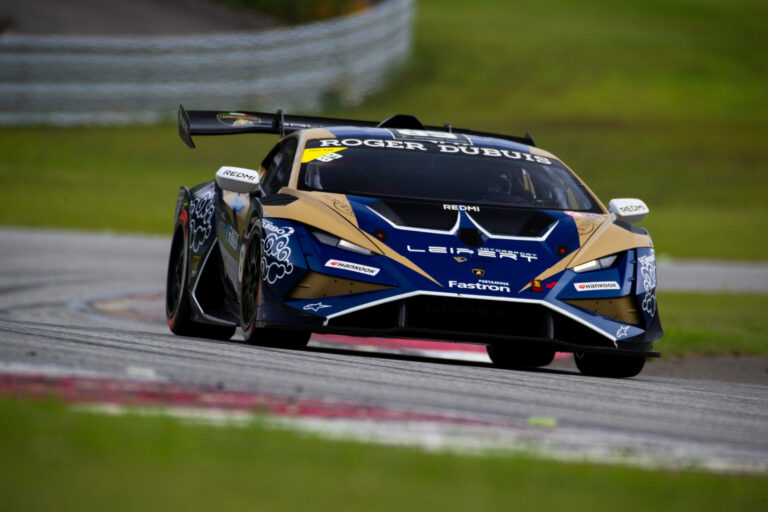Wolf in wolf’s clothing
In the September/October 2023 issue 389, we discover there’s much more to this cute 1973 Triumph GT6 British sports car, than meets the eye.
John Burke of Paremata is the owner of our stunning cover car but felt the car was somewhat underpowered and that annoyed him. So he took this pristine example of a 1973 Triumph GT6 and installed a V8 engine from a Triumph sister manufacturer, Rover. The resulting car is a restomod that really ticks a lot of boxes.
“In 1963, Standard-Triumph, as the company was then known, delivered a Mk 4 Spitfire to Michelotti’s studio in Italy and commissioned him to design a GT version. His design, delivered in physical form later that year, was a sleek fastback reminiscent of the E-Type fixed head coupé launched in ’61. It was also not too dissimilar to the Mustang Fastback of 1964, a profile that would become familiar on other American models during the sixties.”
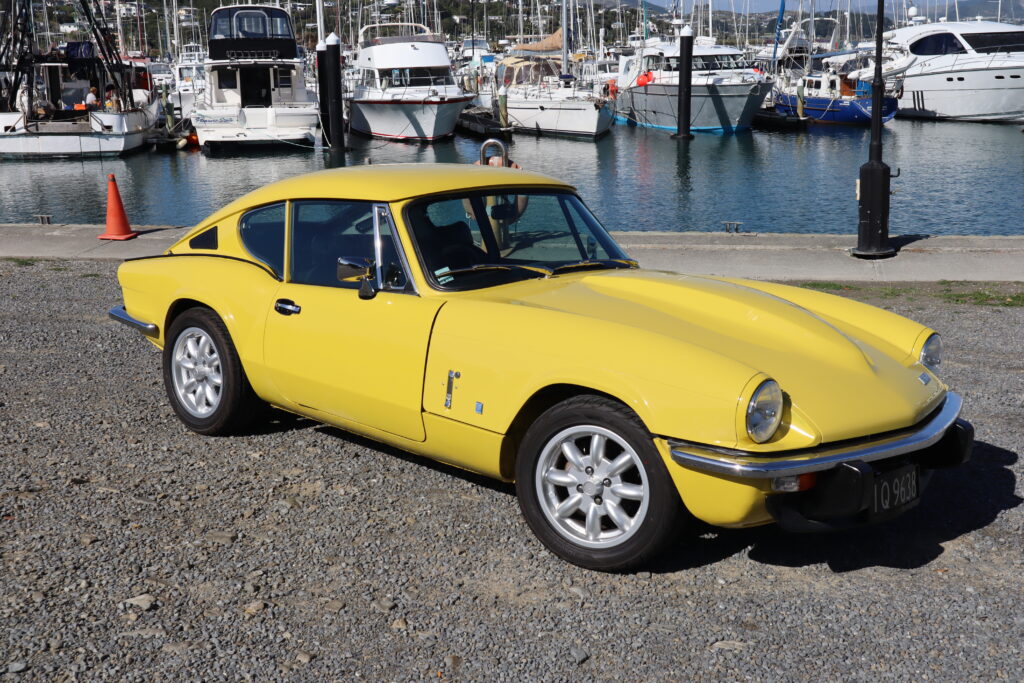
Picking over the past
Designed, originally for life on the farm, Ford’s pickups have become a worldwide style icon and the coolest of them all are the mid-century survivors.
Jim and Daphne Ledgerwood have been around Fords most of their lives. They love their Ford coupés and two door hardtops, while also making room for an occasional Chevrolet. Their Wanaka based ‘Originals’ collection, featured in New Zealand Classic Car’s July 2022 issue is headed by an outstanding time-warp black 1940 Ford Coupé, its original factory assembly markings and documents offering something of a nostalgia trip.
“Daph and I were heading to Christchurch to catch a flight to California to take part in an Early Ford Club of America National Rally when I spotted Ollie travelling in the opposite direction. My immediate thought was to turn around and chase it and see if it could be bought. Daph reminded me that we were already running late and didn’t want to miss the flight. Jim was very keen to collect another 1940 Ford pickup and couldn’t get the thought of the local vehicle out of his mind. On their return he contacted a friend who, it turned out, knew the exact vehicle they had seen.”
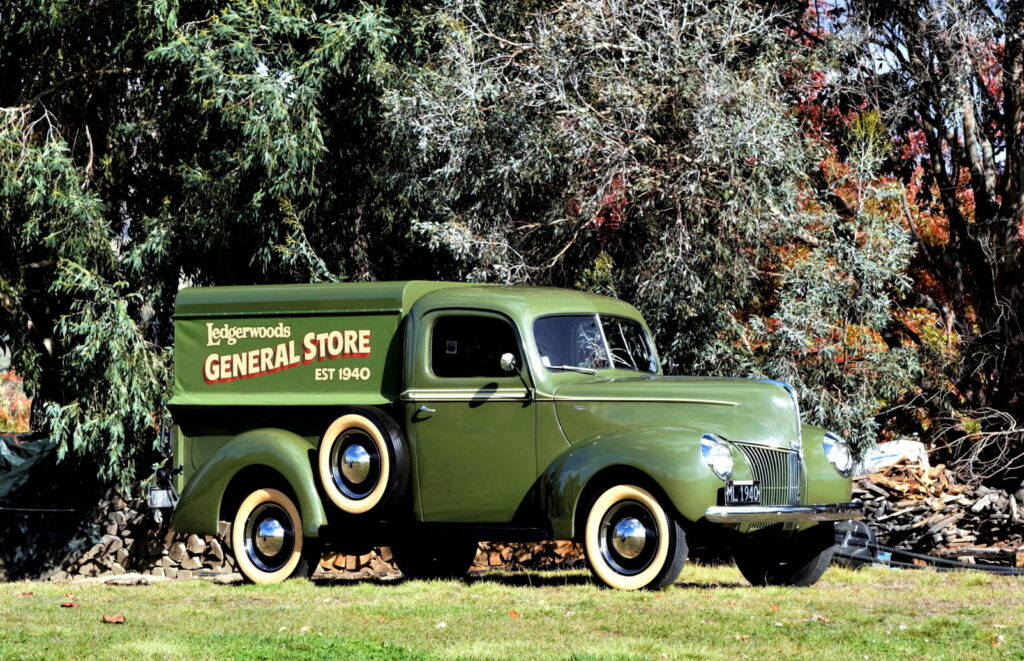
Un parapluie pour quatre – an umbrella for four
Citröen’s iconic 2CV embodies French chic. It is a triumph of minimalist design with a large dose of practicality, packaged to make the most of the least.
The Michelin family, famous for its tyres and its eponymous guide to the best food in France, created to encourage more gastronomes to travel, conducted a survey to determine the best way to get more French people more mobile.
The answer from Citröen vice-president Pierre-Jules Boulanger was an affordable, simple and rugged ‘umbrella on four wheels’, that would carry four adults, plus 50kg of farm goods at 50kph. An ability to handle rough roads, tracks, even fields, would be essential. Famously added to the design brief was a requirement that it should carry a basket of eggs across a ploughed field without whipping up an omelette.
“Special edition models were often created to celebrate a French sporting occasion, wine festival or other national event, or just because, and it is one of these gems that we are featuring in this issue, a 2CV6 Charleston. The last 2CV left the production line at PSA Mangualde, France, on 27 July 1990.
That last car was also a Charleston model, similar to the one Auckland Citröen Club enthusiast Kerry Bowman has recently restored. We have previously featured another of Kerry’s Citröens in New Zealand Classic Car, a very rare Wankel engine Citröen GS Birotor.”

Chevy van is a Star
Fads in the car world have left a legacy of weird and wonderful creations but one of the most comfortable niche vehicles has to be the luxury panel van.
The big automotive manufacturers, always one step behind pop culture, took note of it and started to build vehicles for the new market. Starting with a commercial van, they added a few extra seats, wild graphics to the exterior and strangely shaped windows. Under the bonnet, initially, lurked the conventional 4-cylinder engines designed simply for getting goods from point A to B. Over time these were upgraded to bigger and more powerful engines.
“Without a doubt, the 1995 Chevrolet G20 Starcraft was the ultimate luxury family vehicle, costing well over US$30,000 in its day (about NZ$116,000 in today’s money. As the segment’s popularity has waned somewhat, Michael Schrader bought the 1995 example featured in this issue, for a lot less than that.”
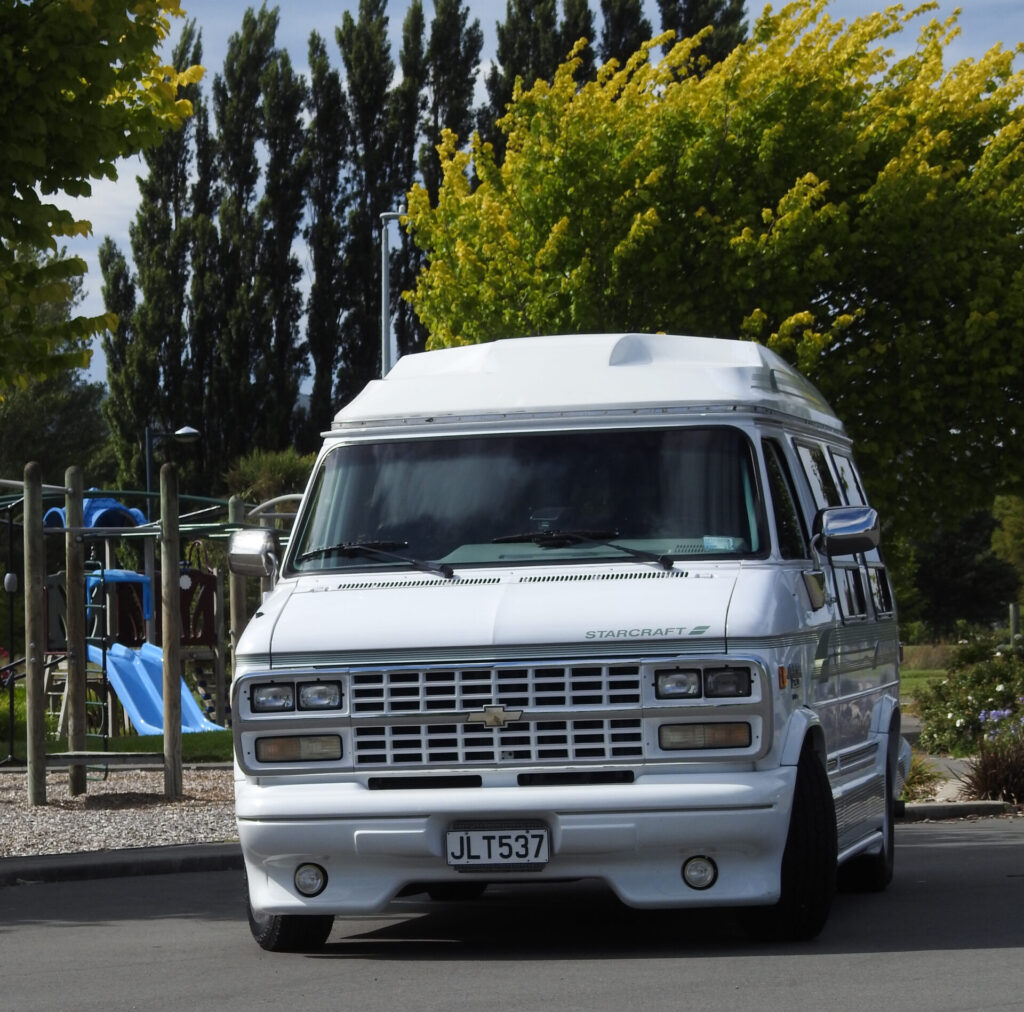
1957 MGA Roadster
A thing of beauty and a joy forever
For Norm Hammond, this car’s owner, it was love at first sight – and that was back in 1957 when he was 16 years old and visiting the west end of London. He had always been fascinated with cars and as it happened he was standing on a corner waiting for the lights to change when a Jaguar came through the intersection. He duly noted it, but then right behind it was a new MGA roadster. Hammond says: “The Jag caught my attention, but the MGA stunned me. It was blondish, curvaceous, and racy.”
“I reach inside the little door and pull the cable to open it. There are no door handles or roll up windows on the roadsters to clutter them up and add weight. I plant myself sidesaddle on the driver’s seat and pull my left leg up tightly to my chest before swinging it round and into the footwell. I then repeat the process with my right leg.
This would not be the ideal car for a Le Mans start, but once in there is plenty of legroom and the bucket seat is quite comfortable. Norm folds himself in on the passenger side and we bump shoulders. The MGA is intimate, width-wise.”
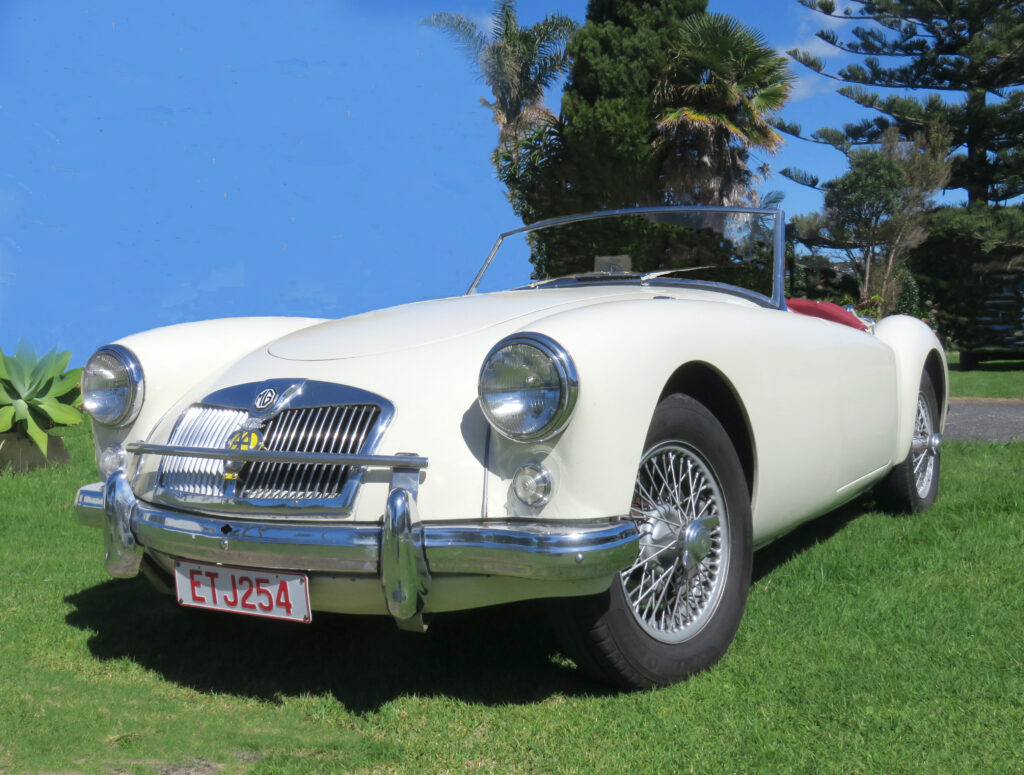
Valletta Concours, Malta
A city built by gentlemen, for gentlemen
James Nicholls was invited to be a member of the judging panel at this year’s Valletta Concours.
The brainchild of brothers John and Joel Saliba, the Valletta Concours is the finest event of its kind in the Mediterranean, and I was delighted to be invited to be a member of the judging panel led by Mr Concours, also known as Jeremy Jackson Sytner, whose mother hails from the island.
I was in exalted company with such car luminaries as Michael Quinn, the grandson of Jaguar founder Sir William Lyons, and Professor Peter Stevens – one of the world’s best-known and most sought-after automotive designers.
“As Peter Stevens succinctly put it, “The thing to remember when you go to a faraway place to judge a concours event like Malta is not just the cars. It is just as much about the place and the people. It’s the mummified head of a long dead nun, the freshly caught fish, the friends in the judging team, and the archaeological museum you never found before. It’s the lovely coloured E-Type that was Best in Show, and the Thunderbird that I thought appealing, plus the charming station wagon that really grabbed me – and a couple of other judges that insisted I look at it! And it’s the city itself.”

Kits & Pieces
Goodwin GT – Chasing a dream
Most of the New Zealand-designed cars Patrick Harlow has written about have made it into production, albeit with varying degrees of success. Some, regardless of their merits, only got as far as the prototype stage.
Patrick first discovered the Goodwin GT through a 1972 Motorman magazine story. The car received about a dozen words in a story about ‘The National Motor and Transport Show’ in Wanganui. The show was a success, drawing in around 90,000 people over 15 days in May of that year. What caught his attention were two black-and-white pictures of concept or prototype show cars. Both cars were being prepared for production. Exciting stuff, but they both vanished without a trace for decades.
“The Goodwin GT Mark 2a was last seen in a garage in Mt Roskill, Auckland, about 10 years ago. My belief is that it still exists because it was surely too good looking to destroy. One day, it may appear again at a car show somewhere.
As for the Mk1, it is now with its third owner. The second owner for about 30 years was Colin Simpson. After he passed away Colin’s children approached the current owner, Graham, a car enthusiast, to see if he would look after it.”
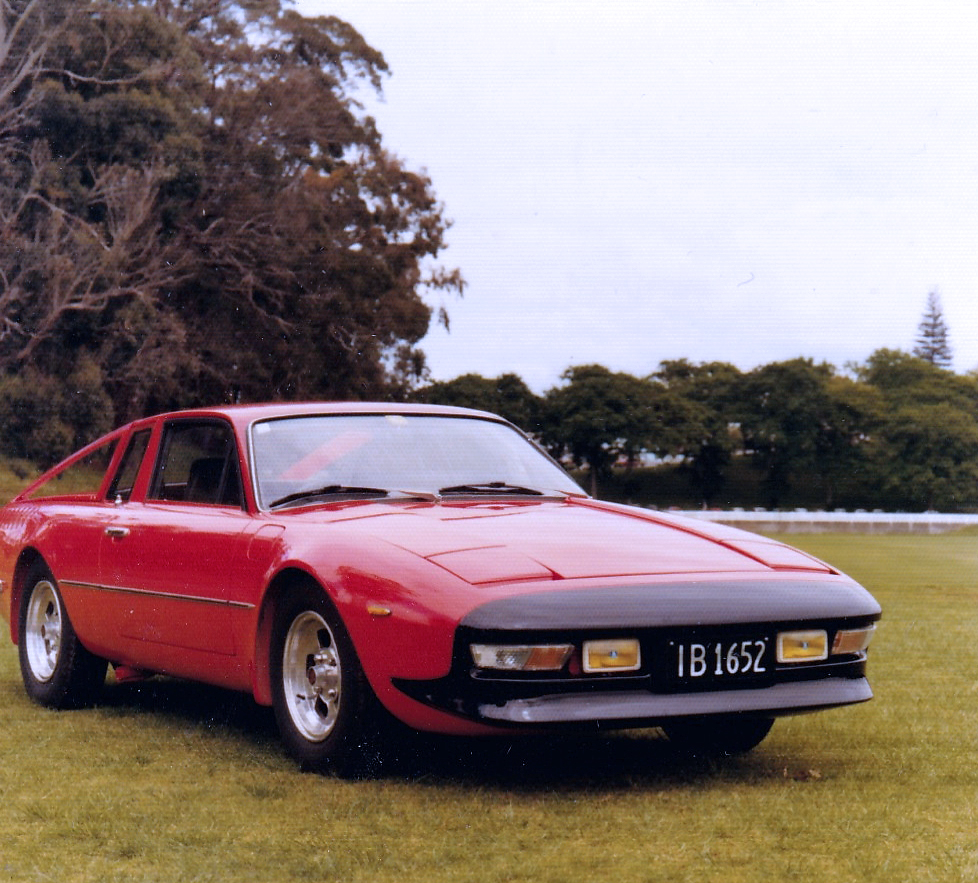
Lunch with … Brett Riley
Brett Riley is surely one of our most naturally talented drivers. He beat many of the drivers who went onto fame and fortune in Formula 1 and came within a hair’s breadth of making it himself. Mid 2023, Brett will turn 70. He doesn’t look it but he’s recently retired and finally ready to reflect on all the great things he achieved, of chances missed and the importance of being as savvy out of the car as in it.
“In the middle of 1974,Brett’s 21st present was a trip to Europe. “It was a magic, motor-racing-dominated six weeks taking in the British and German Grands Prix, but I was equally captivated by the FF racing at Thruxton. I’ve always been a bit of a ‘glass half empty’ person so I never imagined I would be good enough because I wasn’t worthy. At that stage, I still hadn’t won a race.”
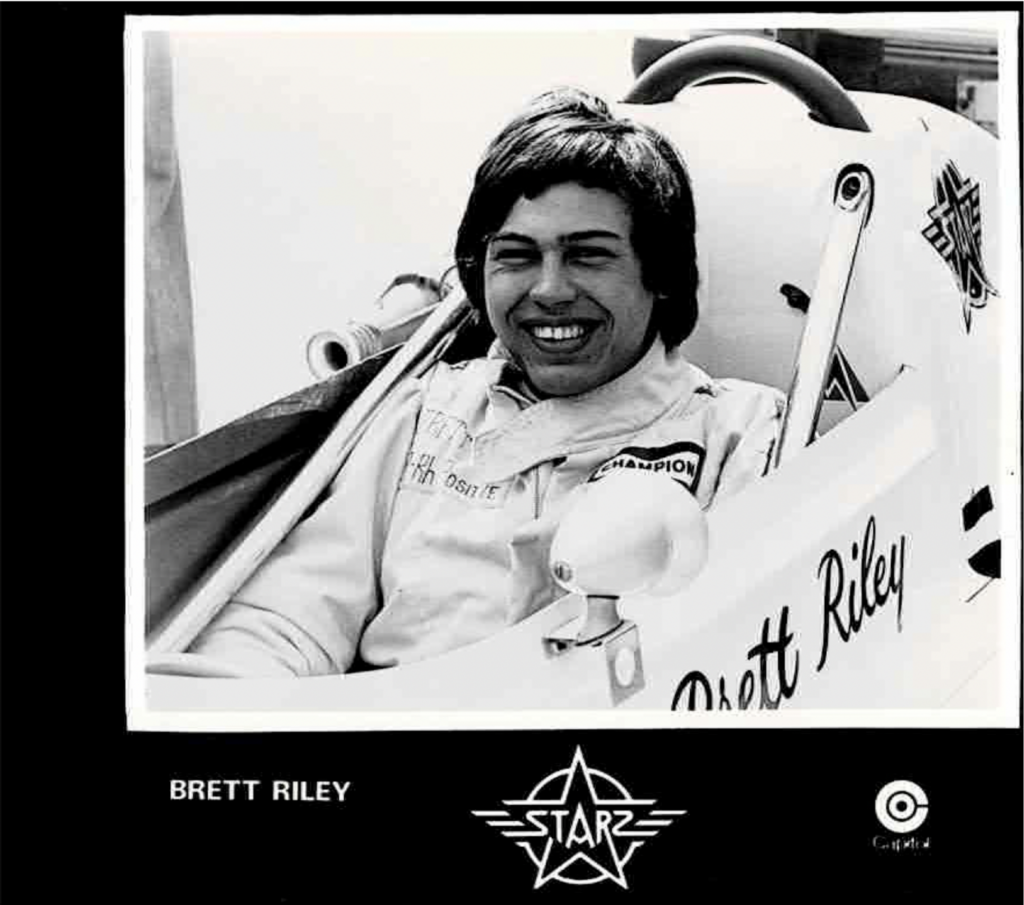
Mary Carney – Part 2
Pukekohe magic
We take up racing driver Mary’ Carney’s story again on 8 March 1970, a magical day at Pukekohe when Mary made history.
“Mary and her Mini were in scintillating form from the get-go of this championship meeting. The Arden engine and gearbox were behaving themselves for once and Mary made the absolute most of it. She and Barry Phillips in their respective Arden Minis laid down equal 1:20.0 laps in practice. They were only beaten by Alan Boyle’s 1:19.2 banzai lap, in his 970cc Cooper S. This was short of the 1:18.8 lap record for the 1-litre class, but Mary would deal to that in the races.”
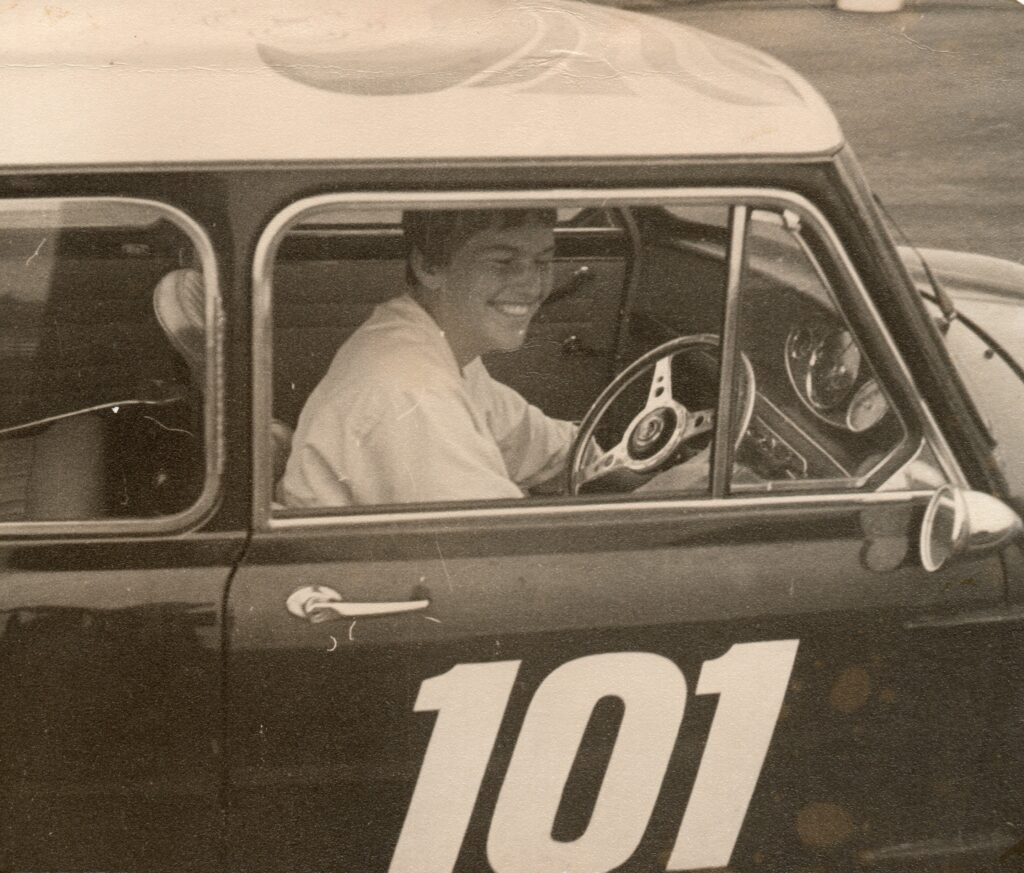
Motorsport flashback
Woolfy
Allan Woolf was as much a fixture of the local motor racing scene as checkered flags. Michael Clark looks back over a racing career that started in the middle of the previous century.
“Together, Allan and Colleen Woolf were part of the very fabric of the local motor racing scene – it didn’t seem to matter whether it was a Grand Prix or a humble club meeting, they’d be there. When I interviewed Allan at the ‘Farewell to Pukekohe’ dinner mid 2023, I subsequently remarked to people that he just might be the fittest, most alert and with-it 93-year-old on the planet, so to learn of his passing in mid-July came as something of a surprise … not something you normally think when someone is closing in on three numbers.”
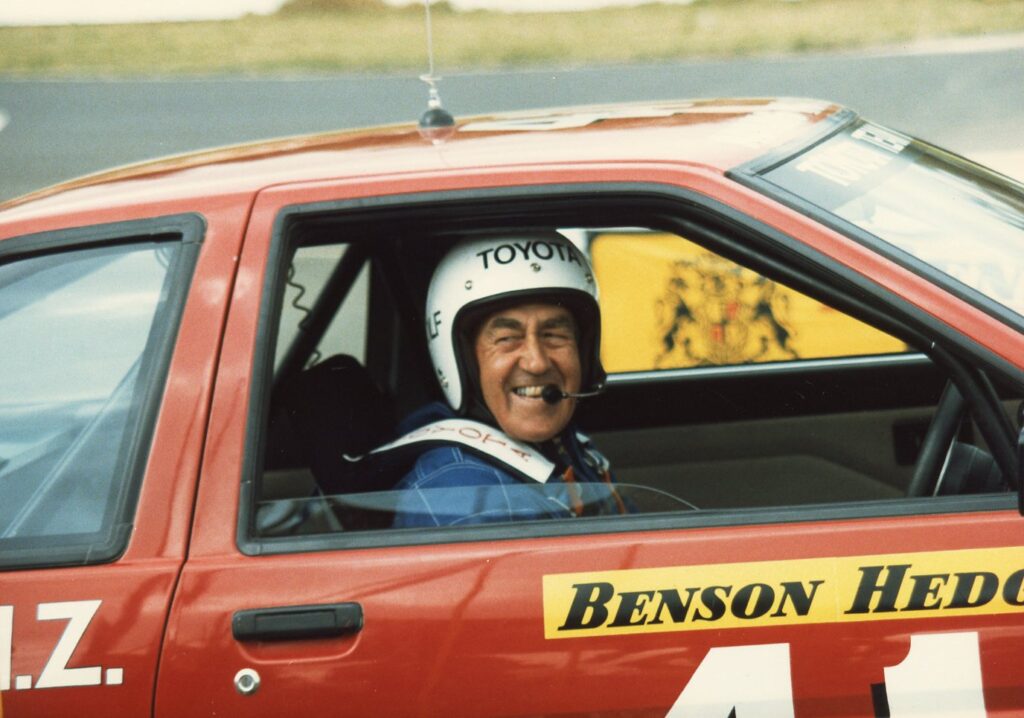
Marketplace report
The hottest hatch
When it comes to practical performance, it’s hard to beat the hot hatchback
The concept of putting big power in a car designed to take you to the supermarket took off like a rocket in the late ’70s. One, in particular, is regarded as the greatest of all and, for the discerning types, it’s not the Golf GTI but the Peugeot 205 GTi.
“Launched in the mid-eighties, the 205 GTi was an instant classic. According to GTi owner Chris Hogg, it dethroned the original hot hatch, the MK1 Volkswagen Golf GTi, as the supreme leader of the segment.
“When the 205 GTi came along in 1984, it was king of the road. At the time you had the Golf GTi and the 205 just blew it out of the water. They handled amazingly thanks to that beam axle setup; its 130hp and the fact it weighed 880kg. You drive the car now and it still holds up nicely against a modern hot hatch – and it still looks good today, 39 years on,” he says.”
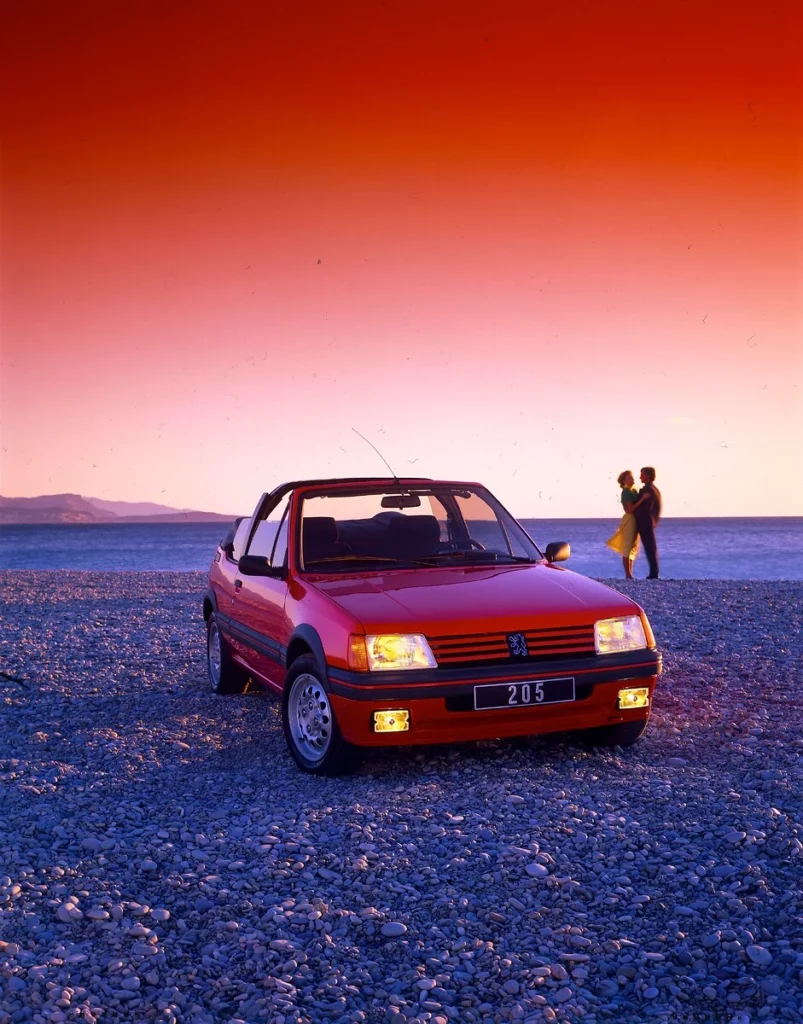
Price on by Greg Price
Electric vehicles (again)
I don’t want to sound like a stuck record, but …
Some issues back, (#s375 and 379), I brought you up to speed with my concerns on the feasibility or otherwise of owning an electric vehicle or EV, as we’re now expected to call them. On YouTube you can find a compilation of video clips of various EVs, buses included, bursting into flames, and exploding, and in some cases setting adjacent vehicles on fire.
Book reviews:
Lost in time: Formula 5000 in North America
John Zimmermann. Published 2021 by Racemaker Press
ISBN 978-0-9998754-4-5. $US85
Vauxhall cars 1945 to 1965: A Pictorial History
Trevor Alder. Published 2023 by Veloce who provided the review copy.
ISBN 978-1-787115-93-4. $US42 from Amazon (including postage)
Coaching from the bench
Don’t be lead astray
Jim takes a look at the differences between applying lead and plastic body filler to achieve the perfect finish.
“I was wrong; I know that now. For years I thought that doing bodywork with lead was too old- fashioned and fiddly to bother with. In the past I managed to get around it by welding in patch panels and using plastic filler. But recently a friend showed me how to body solder, and explained why it is better, even necessary in some cases. I became a convert. I found out that lead work isn’t as easy as spreading on Bondo, and the cost of lead sticks can add up, but there is no mystery to it, and no fancy tools are needed.”
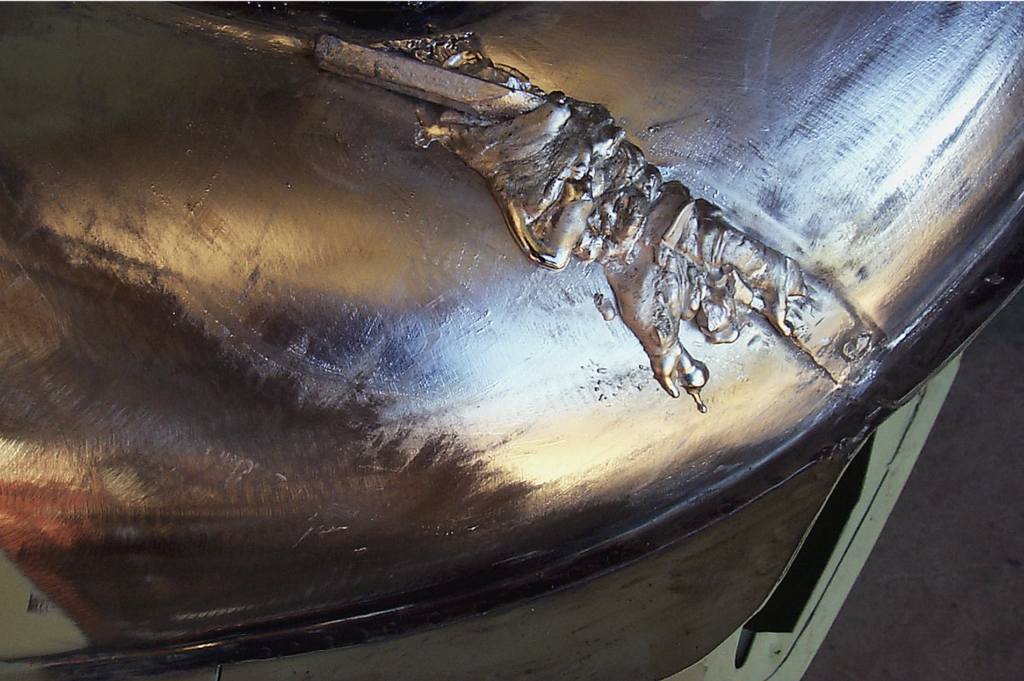
Behind the Garage Door
Morgan cowl caper
One of the downsides of restoring a handbuilt car is finding the right part –– and then getting it to fit. It’s not often you get this lucky.
Our classic car news this issue is:
Goodwood Festival of Speed celebrates 30 years
A MSNZ Distinguished Service Award for Bruce Dyer
Hamilton Classic Car Meet
North Canterbury Classic Gathering
The 13th annual Horsepower display and swap meet at Trentham Racecourse.
To purchase a copy of this issue of the magazine, head to our online shop magstore.nz


